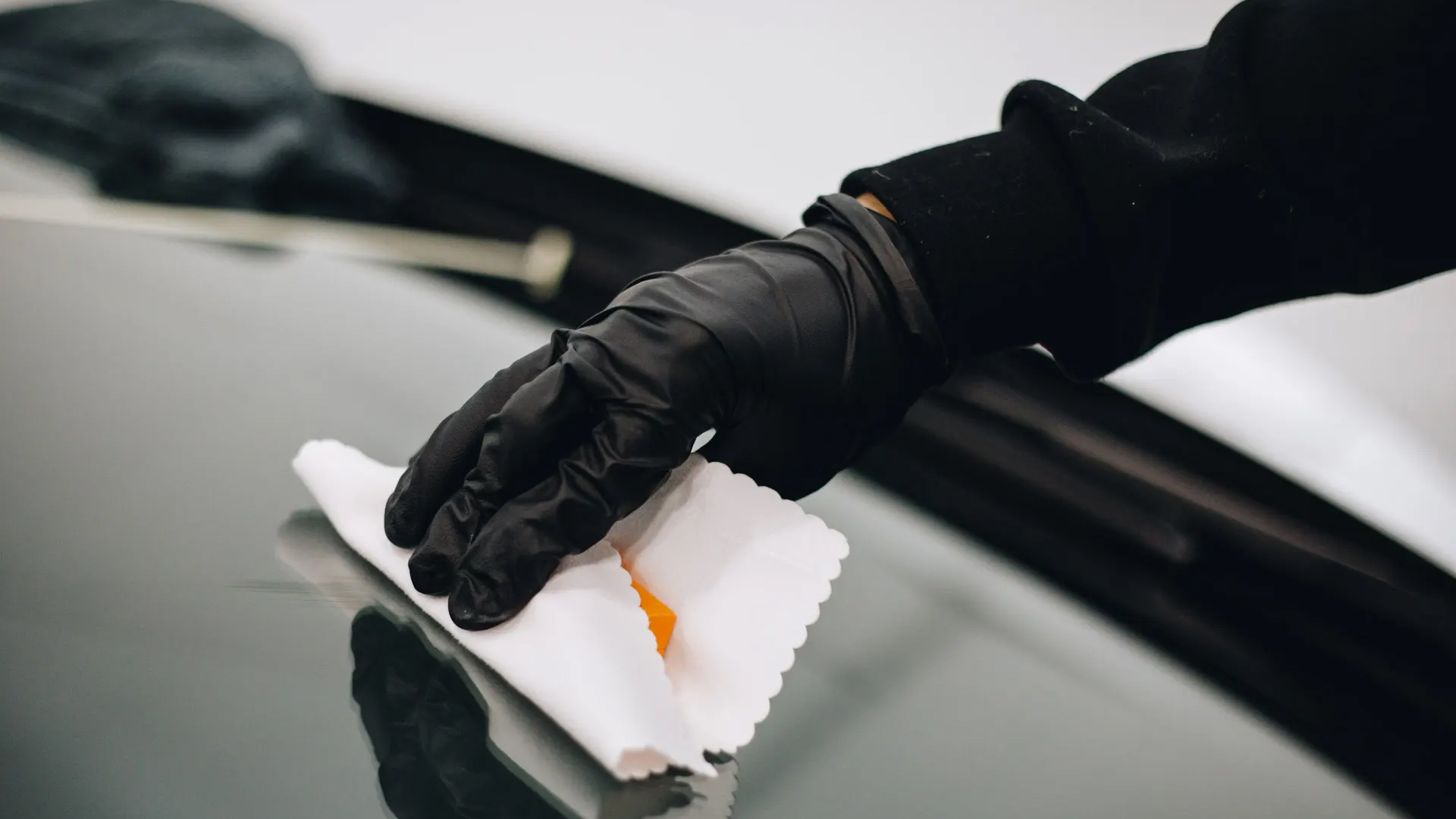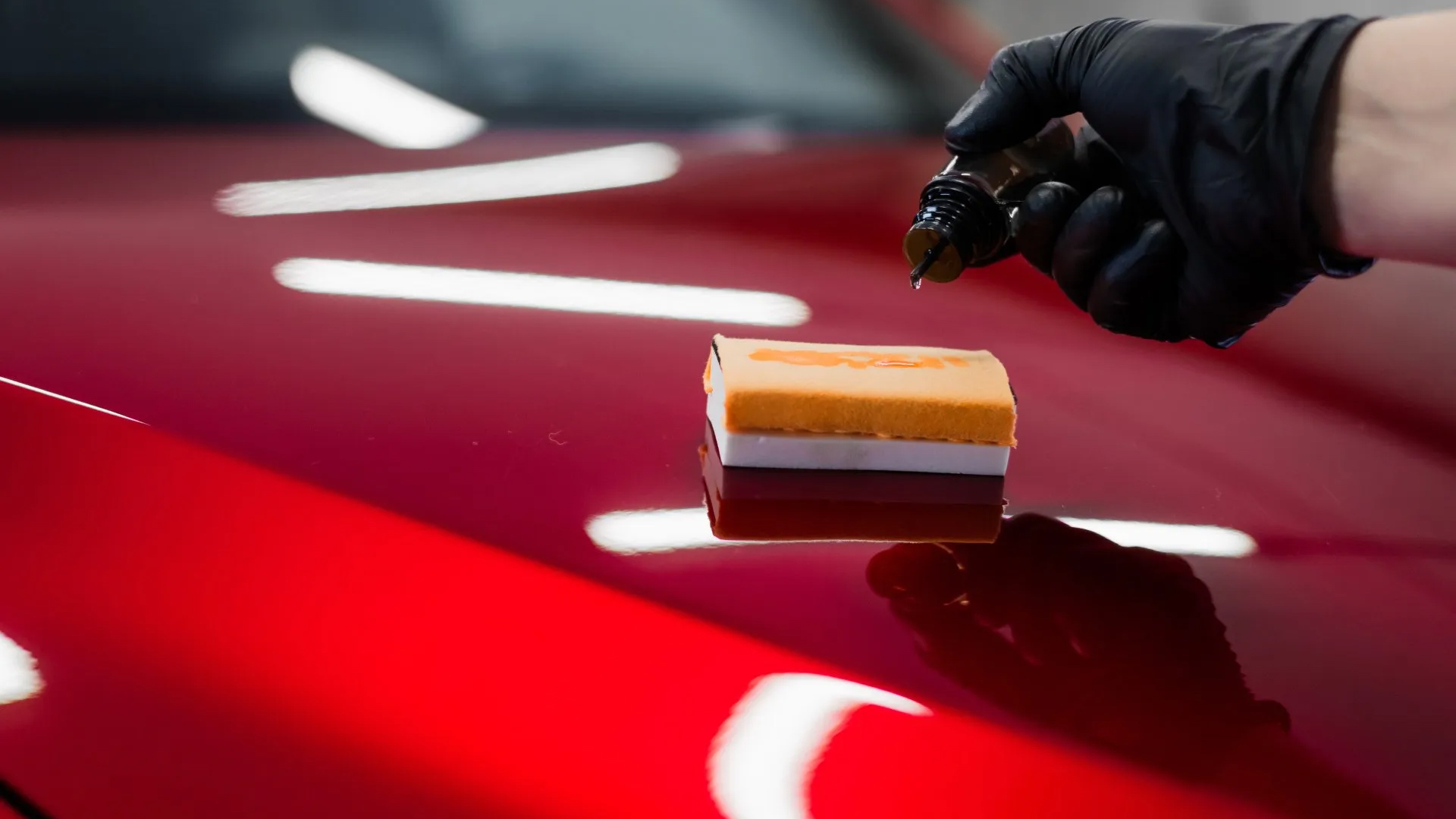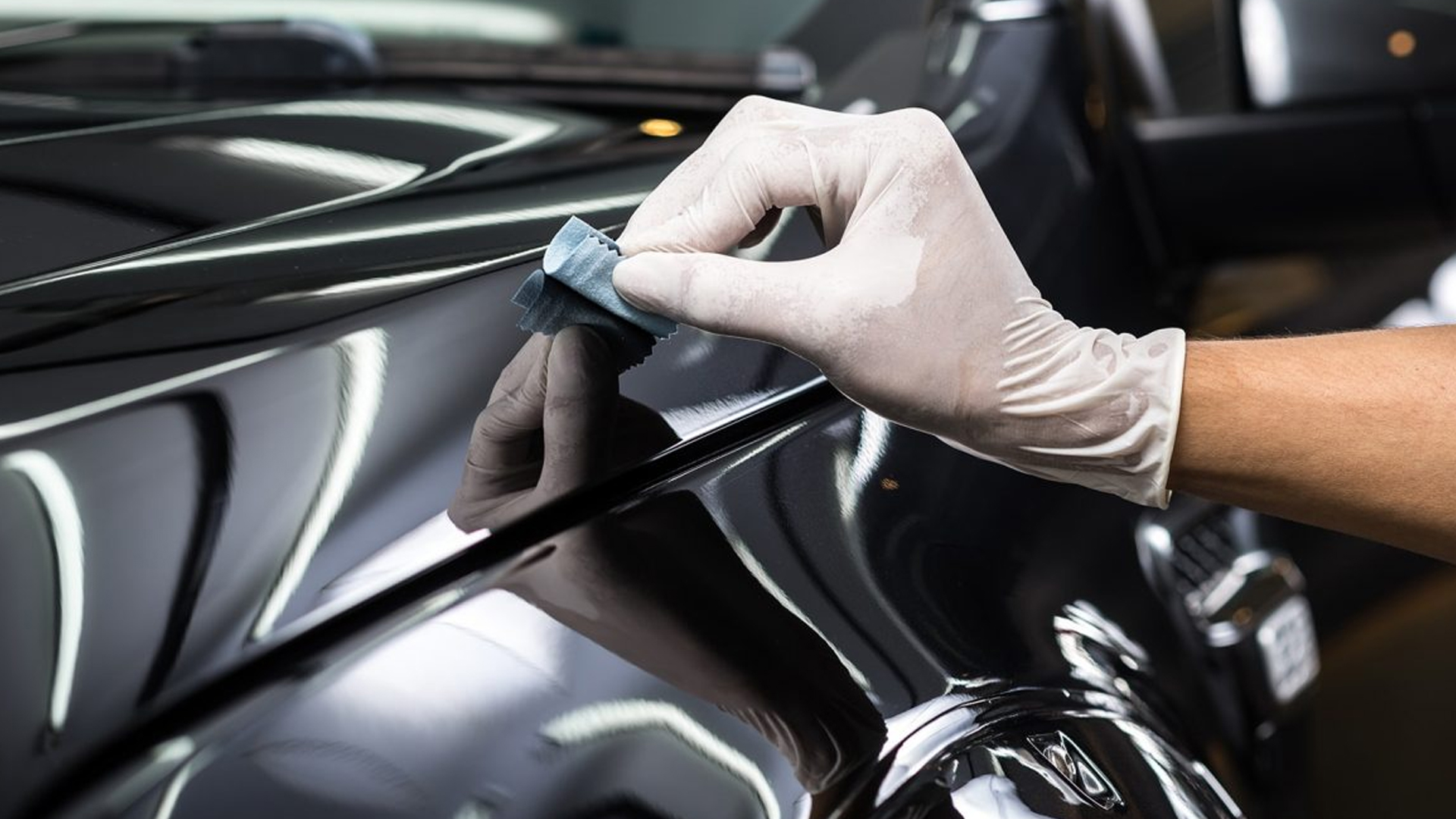In the world of automotive care, the ceramic coating has emerged as a revolutionary solution for protecting and preserving the paintwork of vehicles. This advanced coating, formulated with cutting-edge nanotechnology, offers unparalleled benefits and has gained popularity among car enthusiasts and professionals alike.
A liquid polymer known as ceramic coating is applied to a car’s external surfaces to create a translucent layer that adheres to the paint. Unlike traditional waxes and sealants, which provide temporary protection, the ceramic coating creates a long-lasting shield that enhances the car’s appearance while providing a robust defense against various environmental hazards.
Protecting the car’s paint is crucial in maintaining its value and aesthetics. The ceramic coating acts as a barrier against UV rays, oxidation, scratches, swirl marks, bird droppings, and chemical contaminants. Additionally, it exhibits hydrophobic properties, causing water and dirt to bead and slide off effortlessly, resulting in a self-cleaning effect.
By preserving the car’s paintwork, ceramic coating minimizes the need for frequent waxing and detailing, saving both time and effort. With its exceptional durability and longevity, ceramic coating ensures long-term protection, making it a wise investment for car owners who desire a showroom-like finish.
In this article, we will delve deeper into the intricacies of ceramic coating, exploring its composition, application process, benefits, and maintenance techniques. Join us as we unveil the magic of ceramic coating and unlock the secrets to long-lasting paint protection.
Understanding Ceramic Coating

To increase a vehicle’s endurance and protect against different sorts of damage, ceramic coating is a protective layer placed on the outer surfaces. It is made of cutting-edge liquid polymers that contain ceramic nanoparticles to guard the vehicle’s paintwork for a very long time with high performance.
Ceramic coating’s improved longevity and durability are two of its main advantages. In contrast to conventional waxes and sealants, ceramic coatings make a semi-permanent link with the paint surface to build a protective layer that can survive challenging climatic conditions and regular wear and tear. By doing this, you may prevent the need for regular reapplication and ensure that the vehicle’s paintwork is protected for a long time.
Additionally, ceramic coatings provide great defense against oxidation, fading, and UV radiation. The coating’s ceramic nanoparticles serve as a barrier, protecting the paint from the sun’s UV radiation, preventing color fading, and preserving the shiny appearance of the car.
Additionally, ceramic coatings offer outstanding resistance to scuffs, chemical stains, and pollutants. The coating’s robust molecular structure produces a hard, glossy surface that aids in repelling and resisting scratches brought on by road debris, brushes, or unintentional touch.
Additionally, it serves as a defense against chemical stains that can etch into the paint, such as bird droppings and tree sap. Additionally, because ceramic coatings are hydrophobic, it is simpler to clean cars, and less dirt and grime stick to them.
The Science Behind Ceramic Coating

Ceramic coatings for automobiles are the result of cutting-edge nanotechnology and sophisticated scientific theories; they are not just another layer of protection. It is easier to comprehend the astonishing advantages of ceramic coatings if you are aware of the science behind them.
Ceramic coatings heavily rely on nanotechnology. Small nanoparticles make up these coatings, which are typically made of silica or silicon dioxide (SiO2). Incredibly tiny, these nanoparticles are frequently measured in nanometers (one billionth of a meter). The nanoparticles’ modest size enables them to enter the paint surface’s minuscule pores and create a solid link with the substrate.
Ceramic coatings’ longevity is mostly determined by the molecular bonding mechanism. The nanoparticles form a long-lasting and protective coating by chemically attaching to the paint surface through covalent bonds. The surface of the car is long-term protected by this bonding because it prevents the ceramic coating from washing off or wearing off quickly.
A protective layer is created on the surface of the car during application when the ceramic coating experiences a chemical reaction and cross-links. This layer serves as a barrier, keeping outside impurities from damaging the paint and getting through. It builds up a defense against UV rays, oxidation, chemical stains, and minor scratches, assisting in maintaining the car’s appearance and lowering the frequency with which repainting is required.
Ceramic coatings’ hydrophobic qualities are one of their most notable qualities. Water and other liquids bead up and simply glide off of the coating’s super-smooth, repelling surface thanks to its chemical composition. Because dirt and grime have a hard time sticking to the surface due to this hydrophobic effect, the car is easier to clean and maintain.
Nanotechnology, molecular bonding, the development of a protective layer, and the hydrophobic characteristics that contribute to their exceptional performance are all part of the science behind ceramic coatings. Ceramic coatings are a useful option for long-lasting paint protection because of these scientific concepts.
Application Process
Surface Preparation
Proper surface preparation is essential to ensuring the application of the ceramic coating is successful. This procedure includes thoroughly cleaning and decontaminating the vehicle’s paintwork, followed, if necessary, by paint correction.
Decontamination and thorough cleaning:
The surface of the car needs to be thoroughly cleaned before applying the ceramic coating to get rid of any pollutants that can prevent the coating from adhering properly. This entails thoroughly washing the automobile with a pH-neutral shampoo while paying particular attention to all components, such as the wheels and tires. It is also critical to remove any old wax or sealants from the painted surface.
Paint Correction (if required):
To fix flaws like scratches, swirl marks, or oxidation, paint correction may occasionally be necessary. To restore the paint’s clarity and smoothness, use a variety of polishing procedures in this phase. The ceramic coating will adhere to the paint more effectively and produce a faultless finish if these flaws are removed.
The ceramic coating can attach to the paintwork effectively and maximize its longevity and performance by making sure the surface is properly prepared. For the coating to bind with the surface and provide the best possible protection and enhancement for the paint of the car, this process makes it clean and free of flaws.
Remember that the efficiency and longevity of the ceramic coating are closely correlated to the quality of the surface preparation, making it a vital step in the application process.
Application techniques
There are two main methods for coating ceramic surfaces: manual application and professional application. Each method offers advantages and things to keep in mind.
Hand Application vs. Professional Application:
Using applicator pads or microfiber towels, the ceramic coating is manually applied by hand to the surface of the car. It is a more economical choice that automobile enthusiasts or owners themselves may carry out. To guarantee even covering and proper bonding, though, it necessitates close attention.
On the other hand, skilled experts with experience in applying ceramic coatings carry out professional applications. To ensure exact application, they use specialized tools like dual-action polishers or spray cannons. A higher degree of quality is offered by professional application, producing a coating that is more reliable and long-lasting.
Layering and Curing Procedure:
Applying additional layers of the product to increase its thickness and protective qualities is referred to as layering ceramic coating. Layering can increase strength and act as an extra barrier against different factors. Following the manufacturer’s directions is crucial to avoiding overapplication, which might result in inconsistent or failed results from the product.
The ceramic coating must cure after application to adequately bind with the paint of the car. Curing normally entails giving the coating a set amount of time, sometimes 24 to 48 hours, to dry and harden. Due to the coating’s ability to create robust molecular connections with the paint surface, long-lasting protection is achieved.
Time and cost considerations
It’s critical to evaluate the time and money associated when contemplating ceramic coating for your car. Ceramic coating application often calls for significant surface preparation, including cleaning and disinfection. The length of time needed to finish this preparation stage will depend on the paint quality of the vehicle.
In comparison to conventional waxes or sealants, ceramic coating is typically more expensive. The cost may differ based on the size of the vehicle, the type of ceramic coating used, and if the application is carried out by a professional or is a do-it-yourself effort.
But it’s important to keep in mind that ceramic coating offers durable protection, which lessens the need for frequent reapplication.
Long-Term Benefits
Preservation of paintwork and glossy appearance:
Ceramic coating provides a protective layer that helps preserve the paintwork of a vehicle. It acts as a barrier against environmental pollutants, UV rays, and oxidation, preventing the paint from fading or deteriorating. This preservation ensures that the vehicle maintains its glossy and showroom-like appearance for an extended period.
Reduced need for frequent washing and maintenance:
The hydrophobic properties of ceramic coating make it resistant to dirt, dust, and grime. This means that the vehicle stays cleaner for longer periods, requiring less frequent washing. Additionally, the coating makes cleaning easier as dirt and contaminants are less likely to adhere to the smooth surface, reducing the time and effort needed for maintenance.
Potential impact on resale value:
By protecting the paintwork and keeping the vehicle in pristine condition, ceramic coating can have a positive impact on its resale value. A well-maintained and protected exterior enhances the overall appeal and perceived value of the vehicle, making it more attractive to potential buyers. The long-lasting protection offered by ceramic coating can help retain the vehicle’s value over time and potentially yield higher resale prices.
Limitations and Considerations
Not a substitute for proper care and maintenance:
Ceramic coating is not a substitute for keeping your car in good condition regularly. Although it adds another layer of defense, it does not render the car fully impenetrable to harm. To preserve the longevity of the ceramic coating and the overall beauty of the car, proper washing, drying, and routine maintenance are still required.
Professional application vs. DIY kits:
For optimal results, it is recommended to have ceramic coating professionally applied by trained technicians. They have the expertise and experience to ensure proper surface preparation, application technique, and curing. While DIY kits are available, achieving the same level of quality and durability can be challenging without proper knowledge and equipment.
Cost vs. long-term benefits:
Ceramic coating can be a significant investment. It is essential to consider the cost versus the long-term benefits. While the upfront cost may be higher compared to traditional waxes or sealants, the durability and extended protection provided by ceramic coating can result in cost savings over time. It helps preserve the vehicle’s value, reduces the need for frequent reapplications, and protects against potential paint damage that may be expensive to repair.
Conclusion
For automobile owners looking for the best paint protection, the ceramic coating offers a wide range of advantages. In this post, we’ve looked at the many benefits of ceramic coatings, such as increased toughness, defense against UV rays, oxidation, and fading, and resistance to scratches, chemical stains, and pollutants.
Ceramic coatings produce durable and effective protection by establishing a semi-permanent bond with the paint surface of the vehicle. The sophisticated liquid polymers with ceramic nanoparticles act as a strong barrier, keeping the paintwork safe for a long time.
It is strongly advised that vehicle owners take into account this cutting-edge option for their automobiles given the enormous benefits and usefulness of ceramic coating.
FAQ's
Ceramic coating is a protective layer applied to the exterior surfaces of vehicles to enhance their durability and safeguard against various types of damage.
Ceramic coating works by creating a semi-permanent bond with the vehicle’s paint, forming a protective layer that can withstand harsh environmental conditions and everyday wear and tear.
Ceramic coating provides enhanced durability and longevity, protection against UV rays, oxidation, and fading, and resistance to scratches, chemical stains, and contaminants.
Yes, the ceramic coating offers long-lasting protection and surpasses the performance of traditional waxes and sealants, reducing the need for frequent reapplication.
Yes, the strong molecular structure of ceramic coatings creates a hard and glossy surface that helps repel and resist scratches caused by road debris and accidental contact.
While ceramic coating provides excellent scratch resistance, it does not make the car completely scratch-proof.
The longevity of ceramic coating depends on various factors, such as the quality of the coating and proper maintenance. Generally, it can last from 2 to 5 years.
While DIY ceramic coating kits are available, professional application is recommended for optimal results and a seamless finish.
Regular washing with pH-neutral products and avoiding abrasive materials is recommended. Additionally, periodic inspections and reapplication may be necessary.
Yes, ceramic coating enhances the gloss and depth of the car’s paint, giving it a visually appealing and luxurious appearance.




